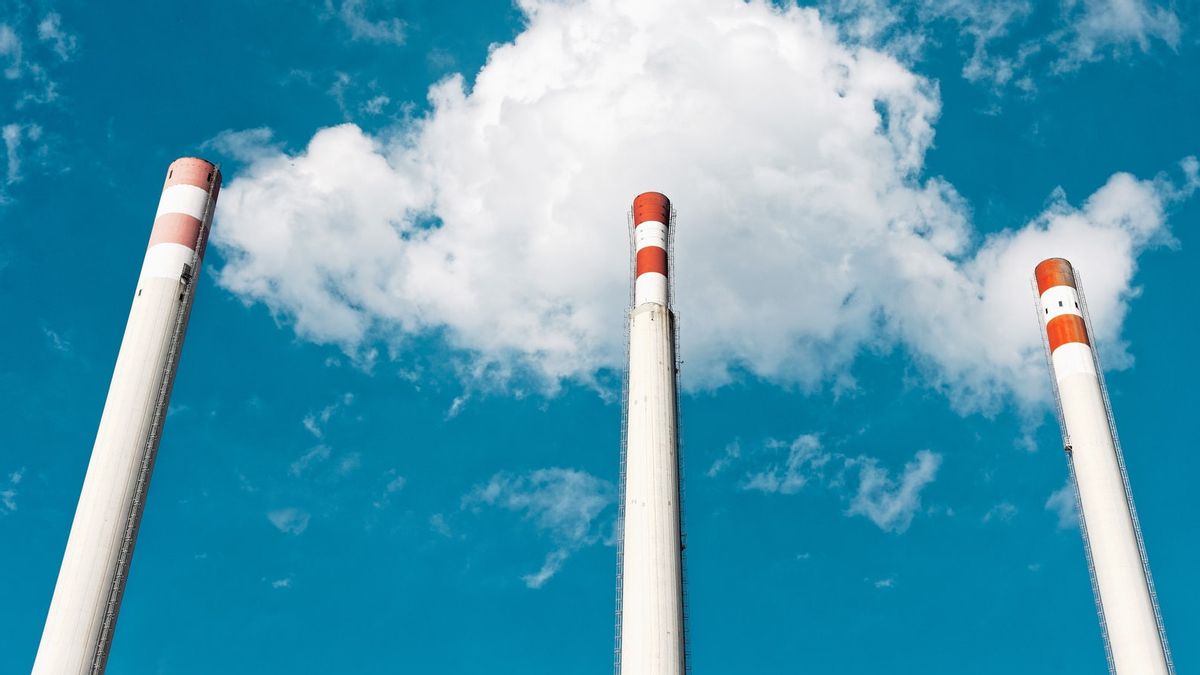JAKARTA - The Ministry of Energy and Mineral Resources (ESDM) has reiterated the importance of installing Ultra Super-critical (USC) technology in large-capacity Steam Power Plants (PLTU). The Director of Engineering and the Electricity Environment of the Ministry of Energy and Mineral Resources, Wanhar, said that the application of USC technology has been included in the roadmap for reducing greenhouse gas (GHG) emissions from the energy sector.
The USC PLTUs currently under construction include the Java 9 & 10 PLTU, the Central Java PLTU (Batang), and the Java 4 PLTU (Tanjung Jati B), all of which are standardized by developed countries in the OECD (Organization for Economic Co-operation and Development) .
"Not as a standard, but a kind of roadmap (road map) for the use of PLTU in Indonesia," he said in a statement received on Sunday, January 10.
Previously, Wanhar had explained that USC's technology included Clean Coal Technology (CCT), which can reduce greenhouse gas (GHG) emissions because it has an efficiency of 40 percent. USC also produces GHG emission intensity lower than other PLTU, such as PLTU Subcritical and PLTU Supercritical.
"The meaning of 40 percent efficiency is the ability of the USC PLTU to convert as much as 40 percent of every energy contained in the coal used by the USC PLTU into electrical energy (kWh)," he explained.
The USC PLTU is also equipped with air pollution control equipment, so that the resulting emissions can meet the Emission Quality Standard.
"Several countries have implemented this technology, one of which is Japan," said Wanhar.
Based on data from the New Energy and Industrial Technology Development Organization (NEDO), the use of USC technology at the PLTU is able to produce an efficiency of 40 percent and an intensity of CO2 emissions of approximately 820 grams per kWh. In addition, coal fuel consumption is getting smaller, around 320-340 grams per kWh.
Wanhar explained again, the construction of the Java, Madura, and Bali (Jamali) PLTU system must use USC technology boilers. However, not for PLTU outside the Jamali System, considering that the capacity is still in the 50-300 MW class.
For PLTUs that have not installed USC technology, they may still use technology one level below USC, namely Super Critical.
"Or PLTU Mouth Tambang for areas that have low calorie coal mines," he continued.
The Mine-to-Mouth PLTU is a coal-fired power plant with a Mine-to-Mouth scheme, with a power plant located parallel to the coal mine site. This power plant can be equipped with a dryer unit or dryer to increase the calorific value and reduce water content.
Especially in Indonesia, Wanhar said that the PLTU USC that was already operating was the Cilacap Expansi 2 PLTU and the Java 7 PLTU which used Chinese standards. The Ministry of Energy and Mineral Resources noted that there are nine coal PLTU locations that will use USC technology, with a total capacity of 10,130 MW.
"With the construction of the USC PLTU with a total capacity of 10,130 MW, it has the potential to reduce GHG emissions by 8.9 million tons of CO2," said Wanhar.
So StandardEnergy Observer and Executive Director of Energy Watch, Mamit Setiawan welcomed the use of USC technology. He even hopes that USC technology can be immediately applied to all PLTUs in Indonesia.
According to Mamit, USC's technology would be very good if applied in the long term. Because it has proven its efficiency in reducing environmental impacts, especially air pollution.
He said that Indonesia has committed to reduce emissions as stated in the Nationally Determined Contribution (NDC) document, which is a follow-up to the Paris Agreement and ratified by Law Number 16 of 2016. The NDC states that the emission reduction target is 29 percent by its own efforts.
"Hopefully this can be applied to all PLTUs. Because this is related to our commitment, where the government is committed to reducing greenhouse gas emissions, especially those produced by PLTUs," said Mamit.
In terms of technology generation, the application of USC is quite profitable. Apart from being easy to find raw materials, boilers on USC's technology can also produce hotter steam.
"So technically this is very helpful. Because the use of coal can be small, but the resulting output is much greater than not using this technology," he concluded.
Previously, Operation Director II Hutama Karya, Novias Nurendra, said in the news that PT Hutama Karya (Persero) and Doosan Heavy Industry were carrying out the construction of the Java 9 & 10 project which is a Coal Fired Steam Power Plant with the latest USCn technology which is efficient and low emission.
"This USC technology will later make the process of producing energy sourced from coal more efficient and environmentally friendly. In the power generation industry, especially coal power, this is the best technology," said Novias in a written statement some time ago.
He explained that in addition to USC technology, the project also uses the implementation of other advanced technologies, such as the Advance Low NOx Burner, Electrostatic Precipitator, Flue Gas Desulphurization (FGD), and the installation of Selective Catalytic Reduction (SCR) to reduce emissions.
The English, Chinese, Japanese, Arabic, and French versions are automatically generated by the AI. So there may still be inaccuracies in translating, please always see Indonesian as our main language. (system supported by DigitalSiber.id)













